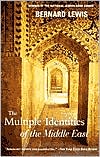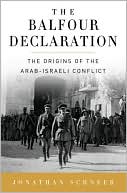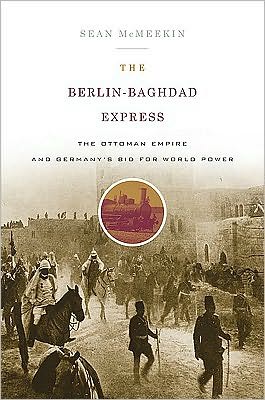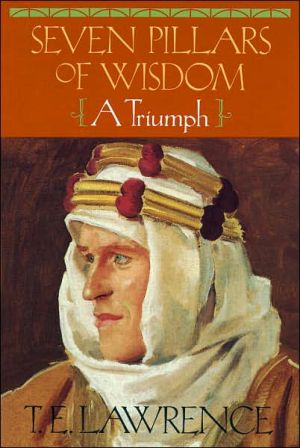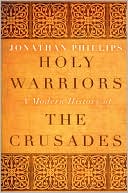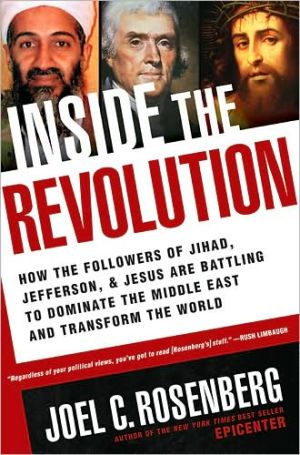The Multiple Identities of the Middle East
The Middle East is the birthplace of ancient civilizations, but most of the modern states that occupy its territory today are of recent origin, as are many key concepts of communal and individual identity and loyalty that the peoples of the region now confront. In The Multiple Identities of the Middle East, eminent Middle East historian Bernard Lewis elucidates the critical role of identity in the domestic, regional, and international tensions and conflicts of the Middle East today.\...
Search in google:
The Middle East is the birthplace of ancient civilizations, but most of the modern states that occupy its territory today are of recent origin, as are many key concepts of communal and individual identity and loyalty that the peoples of the region now confront. In The Multiple Identities of the Middle East, eminent Middle East historian Bernard Lewis elucidates the critical role of identity in the domestic, regional, and international tensions and conflicts of the Middle East today.Examining religion, race and language, country, nation, and state, Lewis traces the rapid evolution of the identities of the Middle Eastern peoples, from the collapse of the centuries-old Ottoman Empire in 1918 to today's clash of old and new allegiances. He shows how, during the twentieth century, imported Western ideas such as liberalism, fascism, socialism, patriotism, and nationalism have transformed Middle Easterners' ancient notions of community, their self-perceptions, and their aspirations.To this fascinating historical portrait, Lewis brings an understanding of the region and its peoples, as well as a profound sympathy for the plight that the modern world has imposed on them. The result is an invaluable tool in our understanding of an area that is of increasing global importance and concern today. Library Journal Lewis is a noted expert in Middle Eastern history, religion, and culture who has authored a number of authoritative works, including The Cambridge History of Islam in its several editions. His new work should be required reading for all Westerners who have any serious interest in understanding how the history and religion of this dynamic area have led to very different interpretations of such traditional Western notions as nation, citizenship, and patriotism. Lewis ably communicates the primary importance of Islam in forming the core personal identity for area Muslims. This relatively uniform identity does not mean, however, that Islam has survived without the rise of numerous schisms or competing visions of Islam and its relation to the state. While the influence of Islam remains strong on most Muslims, Lewis maintains that several Muslim states, such as Egypt, have forged more of a nation state-type polity than others. The reader will appreciate even more how the State of Israel fits into this m lange and why it has been so extremely difficult to build a lasting peace in the Middle East. Strongly recommended for all public and academic libraries.--Stephen W. Green, Auraria Lib., Denver Copyright 1999 Cahners Business Information.
The title of this book, as the reader will recognize, is borrowed from the language of psychology or, to be more precise, of psychiatry. In using this title I do not mean to suggest that the Middle East is suffering from morbid psychological problems. Still less is it my intention to offer any kind of therapy.\ What I want to convey by this title is something of the complexity and variety of the different identities which can be held at one and the same time by groups, even more than by individuals -- the constant change and evolution of identity in the Middle East, of the ways in which the peoples of the region perceive themselves, the groups to which they belong, and the difference between self and other.\ Even in the Western world there are multiple identities. Since the foundation of the United Kingdom, every one of its people has had at least three identities: by nationality, as a British subject, later as a U.K. citizen; by what we nowadays call ethnicity, as a member of one or more of the four indigenous components of that nationality, the English, Scots, Welsh, and Irish; and by religion. In modern times, the range of both ethnicity and religion, within the common British nationality, has been greatly widened, and the subgroups are increasingly mixed. They are even more mixed in the United States, where, similarly, every citizen, in addition to his U.S. citizenship, has other identities, defined by race, by ethnic origin or, often, origins, and by his personal or ancestral religion.\ Like America, Russia too embraces many ethnic groups, acquired not by immigration but by conquest and annexation. France and Spain both have important regional minorities; some of them, like the Bretons and the Basques, preserve languages that are totally different from the official national language. But these are old-established and indigenous, and show no significant cultural or religious differences from the dominant majorities. Elsewhere in Europe ethnic minorities have hitherto been small, few, and without legal or political status or even claims.\ This situation has now changed dramatically, as the immigration of millions of newcomers has created new minorities. These are numerous, widely dispersed, and differ ethnically, linguistically, culturally, religiously, and often even racially from the majority indigenous population. Naturally, they bring with them their own concepts and perceptions of identity, which may differ significantly from those of Europe and the West. Both terms, "Europe" and "West," are of course European and Western, and until the nineteenth century had little or no meaning in other parts of the world, notably in the Middle East. The same is true of the names "Asia" and "Africa."\ Europe is a European idea, conceived in Greece, nurtured in Rome, and now, after a long and troubled childhood and adolescence in Christendom, approaching maturity in a secular, supranational community. Asia and Africa are also European ideas, European ways of describing the Other. All human groups have terms, often derogatory, to designate those who are outside the group. Some of these terms have acquired an almost universal significance. Barbarians were originally non-Greeks, gentiles are non-Jews; Asians and Africans are non-Europeans, and their continents mark the boundaries of Europe, as perceived by Europeans, in the east and the south.\ During the long struggle between Christendom and Islam, these boundaries changed many times. Barbarians did not, of course, regard themselves as barbarians, nor did gentiles regard themselves as gentiles until both were taught, by the processes of Hellenization and Christianization, to see themselves in this alien light. The Hellenization of the barbarians took place in antiquity; the Christianization of the gentiles in the Middle Ages. The awareness among Asians and Africans of this European-defined identity dates, in the main, from modern times, when they were taught this classification by European rulers, teachers, and preachers. By the present day, the Greek invention of the three continents of the Old World has been universally accepted. The enterprise and ingenuity of mostly European explorers and geographers have added several more.\ "Middle East" is self-evidently a Western term, and dates from the beginning of this century. It is a striking testimony to the former power and continuing influence of the West that this parochial term, meaningful only in a Western perspective, has come to be used all over the world. It is even used by the peoples of the region it denotes to describe their own homelands. This is the more remarkable in an age of national, communal, and regional self-assertion, mostly in anti-Western form.\ Within every society there are multiple identities, each with variations and with sometimes conflicting subdivisions. These identities may be social and economic -- by status, class, occupation, and profession. Generation and gender provide two major demarcations of identity; so too do such contrasts as civil and military, lay and ecclesiastical, and the like. In the Bible (Genesis 4), the story of the first clash and the first murder is told against a background of socioeconomic rivalry. "Abel was a keeper of sheep, but Cain was a tiller of the ground." Both brought offerings to God, the one "of the fruit of the ground," the other "of the firstlings of his flock." God preferred the second, and Cain, in anger and envy, "rose up against Abel his brother, and slew him." The rivalry between nomadic herdsmen and peasant cultivators is a recurring theme throughout Middle Eastern history, and in many parts of the region the clash of interests between the two remains important at the present day. In Genesis, the peasant kills the nomad; more often in Middle Eastern history it has been the other way around. Later, with the growth of cities, a more sophisticated clash of identities and loyalties arose, between the city and the countryside, and between quarters in the city, often combining ethnic, communal, and occupational identities. In the larger empires, like those of the caliphs, regional identities and loyalties could acquire social and cultural, but rarely political importance.Social and economic conflicts have an obvious importance in the development of identities and loyalties within a society. With few exceptions, they have had little or no effect on the realities or even, until very recently, on the perception of differences between societies. The one great attempt at a supranational identity and solidarity based on the working class foundered on the rocks of Russian nationalism and Soviet state interest.\ Gender differences obviously have immense social and cultural influence on the evolution of attitudes and identities in any society; in the male-dominated Middle East they are only now beginning to have political impact.\ In the Middle East as elsewhere, historical and literary records show that it was not by social or economic, nor yet by generational and gender differences, that people saw the basic definition of their own identity, the dividing line between self and other. These were -- or have hitherto been -- determined by more traditional criteria.\ The primary identities are those acquired at birth. These are of three kinds. The first is by blood, that is to say, in ascending order, the family, the clan, the tribe, developing into the ethnic nation. The second is by place, often but not necessarily coinciding with the first and sometimes indeed in conflict with it. This may mean the village or neighborhood, district or quarter, province or city, developing in modern times into the country. The third, often linked with the first or second, or both, is the religious community, which may be subdivided into sects. For many, religion is the only loyalty that transcends local and immediate bonds.\ The second broad category of identity is that of allegiance to a ruler, in the past usually a hereditary monarch. This identity is normally acquired by birth. It may be changed by annexation, by transfer of power, or, for the individual, by migration, and, in modern times, naturalization. It is expressed in the obedience owed by the subject to the sovereign and to his multifarious representatives at the various levels at which a subject lives his life -- the head of the state or of a department, the governor of a province or city, the administrator of a district, the headman of a village.\ In most of the world, and for most of the history of the Middle East, these two identities -- the involuntary identity of birth and the compulsory identity of the state -- were the only ones that existed. In modern times, under the influence of the West, a new kind is evolving between the two -- the freely chosen cohesion and loyalty of voluntary associations, combining to form what is nowadays known as the civil society.
List of MapsPrefaceIntroduction31Definitions92Religion253Race and Language404Country575Nation806The State917Symbols1058Aliens and Infidels1119Aspirations131References143Further Reading145Maps147Index155
\ Library JournalLewis is a noted expert in Middle Eastern history, religion, and culture who has authored a number of authoritative works, including The Cambridge History of Islam in its several editions. His new work should be required reading for all Westerners who have any serious interest in understanding how the history and religion of this dynamic area have led to very different interpretations of such traditional Western notions as nation, citizenship, and patriotism. Lewis ably communicates the primary importance of Islam in forming the core personal identity for area Muslims. This relatively uniform identity does not mean, however, that Islam has survived without the rise of numerous schisms or competing visions of Islam and its relation to the state. While the influence of Islam remains strong on most Muslims, Lewis maintains that several Muslim states, such as Egypt, have forged more of a nation state-type polity than others. The reader will appreciate even more how the State of Israel fits into this m lange and why it has been so extremely difficult to build a lasting peace in the Middle East. Strongly recommended for all public and academic libraries.--Stephen W. Green, Auraria Lib., Denver Copyright 1999 Cahners Business Information.\ \ \ \ \ Efraim KarshOnce again we are in Bernard Lewis's debt for incisively analyzing —and evoking — this problem, and the web of contrasting interests, loyalties, and perceptions that support it.\ — Commentary\ \ \ Kirkus ReviewsAn enlightening, if occasionally repetitive, study of the uniquely complex notion of identity in the Middle East. Lewis, professor emeritus of Near Eastern studies at Princeton University (Cultures in Conflict: Christians, Muslims, and Jews In the Age of Discovery, 1994, etc.), proposes that religion, rather than nationality or citizenship, has been the main determinant of identity in the Middle East. Westerners, maintains Lewis, have great difficulty understanding this concept and mistakenly view the current struggles among Serbians and Muslims in the former Yugoslavia as primarily national and ethnic. Because contemporary Western observers do not consider religion significant to identity and because they philosophically and psychologically separate church and state, they "will tend to see—or seek—a non-religious explanation for ostensibly religious conflicts." Though there have always been both ethnic nations and political states in the Middle East, the prominent Orientalist feels that neither had been exclusive factors in determining identity or directing loyalty. Patriotism and nationalism, argues Lewis, are recent 20th-century Western imports to the Middle East. In fact, when nationalist ideas first surfaced in this region, they were denounced by many as "divisive and irreligious." It was even argued that nationalism was introduced to the Islamic world by "arrogant infidels," particularly Jews, in an attempt to cause disunity among the Arabs. Also, Lewis sees a constant flux of various identities affecting those in the Middle East. In Egypt, for example, a Cairene Muslim may perceive of himself as an Egyptian, as an Arab, and as a Muslim. His ties to his Muslimbrothers in Bangladesh are likely to be greater than those to his Coptic next-door neighbors. Lewis perceives the present Arab world as a "mosaic" of separate nation-states, still evolving, where one's primary identification does lie with the state, however recent or artificial its creation by the colonial powers. A provocative exploration into the Middle Eastern psyche with both cultural and political significance.\ \
